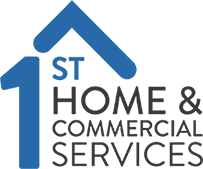Power strips are a great way to add extra outlets to your home, and they're sometimes essential for powering large electronics like TVs and computers. However, there are some safety tips you need to know before using them. Here are some dos and don’ts for using powerstrips safely:
Do
Check the conditions of the power strip. When you receive a new power strip or are reusing an older one, make sure you check the condition of the cord. Make sure you find no frays, cuts, or exposed wires. If you use a wire in this condition it can lead to an electrical fire.
Plug in “light load” appliances. A light load appliance is one in which not a lot of power is needed to run or turn on. Some common examples of great appliances to use with a power strip are lamps, computers, phones, clocks, and radios.
Give the strip a break. Power strips are not built to receive a constant source of electricity and power. Using a power strip sparingly can help save energy, lower bills, and prolong the lifespan of your appliances.
Do Not
Overload a power strip. When using a power strip it’s important to make sure you’re not plugging in more than it can handle. There are certain appliances that you should avoid powering via a power strip such as a refrigerator, space heater, microwave oven, and other appliances that need a lot of power.
Use the strip in the wrong environment. It’s important to make sure the place you use your power strip is conducive with the equipment. Make sure the space is clear of debris, dry, and out of the way of pets and children. Some power cords are suitable for outdoor use and others for indoor use — be sure to pay attention and avoid mixing them up.
Don’t plug a power strip into a power strip. Plugging one power strip into another one is called “daisy-chaining.” This process can lead to overloading a circuit and can put you at a higher risk of starting an electrical fire. It’s best practice to only use one power strip to plug it directly into the wall and not another power strip or extension cord.


.2204221006550.jpg)